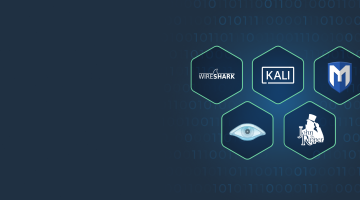

Leveraging predictive analytics tools to reduce customer churn in any industry
Every entrepreneur knows that business success depends on many factors. Broadening the product line, curtailing unnecessary spending, fostering brand awareness, hiring competent staff, finding new channels of rapport with the clientele, exercising efficient management are coal-and-ice practices that redound to the ultimate prosperity of any company. However versatile these endeavors might be, all of them aspire to achieve one thing – customer satisfaction. And a satisfied customer is a loyal customer. In this article, we’ll discuss predictive analytics tools that help improve customer satisfaction and
Customer satisfaction isn’t an abstract notion reflecting the vague attitude of clients to the services you provide or goods you manufacture. It can be expressed in hard numbers that (when viewed chronologically) form patterns and trends, providing a 360-degree view of clients and furnishing food for analysis and actions to improve it. Moreover, such data enables construing predictive insights into the future development of organization-customer relationships.
In the age of pervading digitalization, businesses utilize analytical modeling tools and predictive marketing software that significantly streamline and facilitate all procedures to monitor customer satisfaction across the entire lifecycle of client engagement.
Business-customer relationship lifecycle dissected

While building their relationships with customers, companies move through four basic stages.
Customer acquisition/identification
At this stage, firms attempt to identify those people who are likely to make use of their products and services as well as customers who can potentially yield the greatest profits. With this end in view, predictive analytics tools and techniques are employed to perform segmentation and clustering, parceling clients into groups formed according to their historical and personal data.
Customer attraction
Once the groups are distinguished, predictive analysis tools help pinpoint standard features of all people within the group. These features become a benchmark for deciding upon specific marketing instruments that can most effectively focus on each customer group (for instance, direct marketing or target advertising).
Customer retention
This is the overarching purpose of companies’ interaction with the clientele. Why? All research testifies that customer retention measures across various industries turn out to be between 5 and 20 (!) times more effective than efforts aimed at acquiring new customers. Retention is ensured by high customer loyalty and minimization of customer churn. To forestall it, predictive analytics software suggests machine learning (ML) algorithms that model clients’ likelihood to stop cooperation with the organization based on the relevant historical data.
Customer development
This final phase of organization-client interaction centers on enhancing transaction numbers to provide greater profitability for a business. Here predictive modeling tools probe into the behavioral pattern of the clients to gauge their lifetime value and determine possible upselling and cross-selling opportunities that can augment revenues via closing deals related to associated products or services.
Despite the evident importance of all four described stages, it is customer retention that organizations armed with the best predictive analytics tools channel most of their efforts.
Why is churn prediction vital for any business?
Let’s face it: whatever you do, customers will churn. Modern consumers are extremely flexible in their pursuit of better quality (both products and customer service), additional benefits, unique offers, lower prices, faster delivery, shorter shipping distance, etc. However, organizations must see that this natural development stays within sensible boundaries and doesn’t turn into an avalanche of defections. Otherwise, you will not only see your competitors grow at your expense but will have to face an ever-shrinking customer base and, consequently, witness a stream of your revenues peter out into a mere trickle.
To give shadowy apprehensions about the much-dreaded massive customer loss a concrete numerical shape, companies calculate their attrition rate. They arrive at this ominous index, dividing the quantity of defectors by the number of loyal clients that stay with the firm at any definite time (typically, at the beginning or the end of a month/financial quarter). If this ratio soars, it is a sign that some prompt retention measures must be instituted before moderate defection turns into a disastrous exodus.
However, in our rapidly changing world, reacting to such downward mobility may turn out to close the stable door after the horse has bolted. Instead of being reactive, businesses must become proactive, making pre-emptive approaches the foundation of their retention strategy. And this is where state-of-the-art customer retention know-how steps in, with predictive analytics technology being only one of its means.
Zooming in on customer retention analytics
Analytics that experts leverage to monitor customer retention are of five types.
- Outcome analytics. This approach relates consumption patterns with associated business results. It is instrumental in divining customers’ incentives by analyzing how they use products and services your firm specializes in.
- Descriptive analytics. Such techniques include summary statistics, association rules, and some other methods practiced in market basket analysis. Providing meaningful insights into historical developments, analytics of this kind is rather time-consuming in implementation, yet it can help expose patterns to be subject to a more detailed examination.
- Diagnostic analytics. This method is also historically oriented but focuses rather on cause-and-consequence relations between events of the past. Here belong churn reason and customer health score analyses.
- Prescriptive analytics. Such techniques don’t just list numbers but also offer the ways in which these indicators can be used. They are applied in solving a specific problem, prompting the best option or the most appropriate steps to be taken. The examples of methods that utilize this approach are the next best offer and the next best action analyses.
- Predictive analytics. This is the most widespread approach by far. Showing what may happen next, predictive tools find ready application in customer retention policies developed by commercial organizations.
How do predictive analytics tools work?

The major question confronting all business owners bent on effective customer retention is “How can I know that customer X is likely to jump ship?” Predictive analytic solutions are called to provide an answer to this poser. How does predictive software go about it?
The first thing that it does is processing multifarious client data. Typically, such information is obtained from the company’s CRM. This system stores all details related to customers’ demographics as well as numerous facts from the history of their relationship with the organization (subscriptions, frequency and nature of purchases, enrollment in loyalty programs, registrations, feedback to polls and questionnaires, credit card employment, recurrent visits, etc.).
When all the relevant data is downloaded into the predictive analytics platform, its machine learning mechanisms come into play. Their predictive power aims to model two basic developments (this is why it is called predictive modeling software, in fact): how much profit for the organization the given client is going to bring if they stay with it for good (aka customer lifetime value) and what is the likelihood of this client to defect.
How can predictive analytic software know it? The elementary deduction, Watson! By preliminary analysis of the similar parameters of the lost customers, the tools can expose indicative patterns behind them. Then, ML algorithms look for identical patterns across the data on existing clients and alert the personnel responsible for customer retention. Moreover, the best predictive analytics software can even indicate the period of time during which the defection will occur.
As a result, you obtain a roster of at-risk clients whose churn indices are the most threatening. So, your next move is to develop an efficient customer retention strategy that can prevent their schemes of leaving you from coming to fruition.
Top 5 tips on customer retention
Being among the top predictive analytics software vendors, we at DICEUS know that employing digital tools doesn’t automatically spell the success of your retention efforts. You must be able to incorporate their findings into the comprehensive roadmap of customer retention. We offer some advice on fine points in this strategy.
A detailed plan is a must
A study by Bain & Co revealed that a third of companies’ executives fail to turn data-driven analytics into a competitive differentiator serving as a growth booster. Instead, they consider it as an exclusively IT-related matter and let it gather dust without making much use of it. Such data maltreatment can be avoided by developing an across-the-board retention roadmap through the active participation of all stakeholders. To track the efficiency of the strategy, assess the progress several times a year.
Teach employees the importance of data analytics
However advanced the tools you employ might be, they won’t yield any palpable outcome if the staff responsible for their employment isn’t committed to a hands-on approach to big data and client analytics. Or, departments handling the analytics silo, failing to establish effective two-way communication with other parties to the process. To avoid that, make sure the entire personnel is aware of the utmost significance of using data analytics.
Target the right clientele
While segmenting customers into groups, determine those that have the greatest customer value. These are the most wanted clients you just can’t afford to lose since they drive most of your revenue. So, you should direct the lion’s share of your retention efforts to those customers. Special attention must be paid to the people in this group whose churn probability is the highest. It doesn’t mean that others could be left to their own devices, but high-risk profitable customers are your foremost priority.
Don’t neglect text analytics
Quantitative indices manifesting customer satisfaction can be supplemented by sentiment analysis performed with text analytics software. Such tools employ not only machine learning techniques but also natural language processing to review texts of clients’ responses in open-ended questionnaires and reveal patterns in customer complaints.
Refer to multiple data points
Jumping to conclusions after encountering a single piece of data is a rash course to take. Make sure your actions stem from the perusal of at least several relevant data sources. Otherwise, you will waste your efforts and resources on peppering a denizen of foggy Scotland with sunglasses discount offers just because she once bought this item from you before going on a vacation to the ever-cloudless Maldives.
What technology to use for effective customer retention?
The choice of a predictive analytics tool largely depends on what aspect of customer retention you are going to use it for. Generally, there are four cornerstones of retention endeavor which necessitate different tools to be applied.
- Customer success. People don’t think of churning if they achieve their goals using your product or service. Gainsight is a solid canned solution that leverages voice-of-the-customer surveys – closed-loop instruments of gathering client feedback to listen to customers airing their needs, worries, and complaints. Heeding them, you can keep in the know of consumers’ preferences and plan your actions correspondingly.
- Customer support. Selling a product or a service is only the start of your relations with the consumer. To keep them coming for more, you must make sure any problem with the sold item is effectively handled on short notice. Techsee offers a visual platform that customers can leverage to show the manufacturer what is wrong with the product in real-time. Then, tech support personnel diagnose the issue and gives advice on addressing it via augmented reality technology.
- Personalization. A customer will never leave if they feel the company values them enough to engage them personally and cater to their individual needs. Salesforce developed its Interaction Studio that provides one-on-one interaction with clients by integrating advanced machine learning and profound behavioral analytics. Thus, each customer experience is individualized, which enhances relevance and promotes loyalty.
- Post-funnel marketing. To burn the churn, you should maintain a lasting rapport with your customers post-sale. The tool by Optimotive gives companies a chance to stay abreast of post-purchase customer needs by coupling predictive customer analytics with AI optimization know-how and a multi-channel campaign execution tool.
But performing predictive analytics tools comparison, you should realize that your choice isn’t limited to out-of-the-box solutions.
Build or buy analytics software: A momentous decision
As an alternative to ready-made solutions manufactured by predictive analytics vendors, DICEUS offers the development of custom software analytics. Which kind of software to opt for? Very often, the dilemma is perceived as a choice between price and control. Yet, this is a flawed perception, by and large.
It is true, off-the-shelf solutions are usually cheaper, and they are ready for employment as soon as you are. However, they are mass products designed for an average organization – a user that doesn’t exist, in fact. So paying less, you are sure to acquire a whole set of functionalities that you may never use, which spells a waste of money. Moreover, scalable pricing policies or the necessity to renew a license may turn out to cost you a fortune, in the long run.
Commissioning bespoke software, you are free to order (and thus pay for) only those features that are relevant for your unique needs. Or you can look for a development company that is ready to tailor the existing solution to suit your requirements to a tee. With DICEUS, you can take either path, but both are sure to leave you with a high-end predictive analytics tool, and at an affordable price too.
Summing it up
Customer retention is the chief priority for businesses in the extremely volatile market environment of the 21st century. To make retention campaigns efficient, companies must be able to predict and minimize customer attrition. Custom predictive analytics software tailored to fit the individual needs of a certain organization offers robust models that tremendously promote retention efforts.





